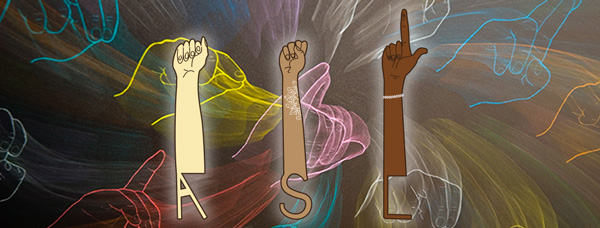
What is American Sign Language (ASL)?
American Sign Language (ASL) is a full, natural language.
A natural language is a language that has developed naturally through use and includes all of the linguistic levels—phonology, morphology, lexicon, syntax, and discourse. English and American Sign Language (ASL) are both full, natural languages.
Since it is a natural language, ASL has a rich and complex syntax and grammar. It is not based on English and does not follow the same structure as English.
Like all languages, ASL is a living language that grows and changes over time.
ASL is a visual-spatial language.
Unlike spoken languages, which are auditory, ASL is a visual-spatial language made up of signs that combine hand and body movements, along with facial expressions.
ASL signs are made up of five parameters—handshape, location, palm orientation, movement, and non-manual signals/markers.
ASL signs are based on meaning. There is not a sign for every English word. Fingerspelling is an important part of ASL and fingerspelling is often used for proper names or to indicate a specific English word for something.
ASL has no written form.
ASL is used in North America.
There is no universal sign language. Different sign languages are used in different countries. American Sign Language is primarily used in North America, including the United States and Canada, though it is used elsewhere due to America's influence.
Just as there are regional differences in English in the United States, such as people from different parts of the country using “soda,” “pop,” or “coke” to mean a carbonated soft drink, there are also regional differences in ASL. Similar to spoken languages, other factors, such as age and background, may affect ASL usage and production.
ASL has evolved over time.
Prior to ASL, invented signs or “home signs” were used by families with deaf children in North America. In the 19th century, a “triangle” of village sign languages (local indigenous sign languages) were used in New England in areas with a high number of deaf residents. Martha’s Vineyard Sign Language (MVSL) in Martha’s Vineyard, Massachusetts was one of the most well-known.
ASL is most similar to French Sign Language (LSF). Its roots come from its use at the first school for the Deaf in North America, the American School for the Deaf (ASD) in 1817. The school was founded by Thomas Gallaudet. The school’s first director, Laurent Clerc, was a deaf French man who taught in LSF, however, the student’s own home signs were heavily used. ASL has evolved over centuries through its use by the deaf community.
ASL is the indigenous language of the American Deaf and Hard of Hearing.
ASL is the language of many deaf and hard of hearing people in North America. Further, ASL is the "center" of Deaf culture. Unlike some communities tied to geographic location, the Deaf community is united by their use of ASL, in addition to their history and culture. In fact, being deaf and Deaf are not the same thing. The word deaf (not capitalized) is the terminology used to describe the audiological condition of hearing loss. The word Deaf (capitalized) is the terminology used by deaf people who are culturally deaf and identify themselves as members of a Deaf community. In this context, the word Deaf is associated with great pride for one’s culture and community. This is sometimes called “big D Deaf."
It is each person’s choice to define their own identity, and identification with the Deaf community is a personal choice. Additionally, the community is not automatically composed only of people who are deaf or hard of hearing.
Deaf people are a linguistic minority and the rights of the Deaf and their ability to use ASL freely have been threatened throughout history. The Deaf community thrives through connections—communication through sign language, experiencing cultural traditions through social activities, promoting Deaf culture through art forms, and valuing sign language use in education.
Resources
- American Sign Language. (2022, January 12). In Wikipedia. https://en.wikipedia.org/w/index.php?title=American_Sign_Language&oldid=1065322982
- Bahan, B. (1996). Non-Manual Realization of Agreement in American Sign Language. Boston University.
- National Association of the Deaf. (n.d.). What is American Sign Language? https://www.nad.org/resources/american-sign-language/what-is-american-sign-language/
- National Deaf Center on Postsecondary Outcomes. (n.d.). The Deaf Community: An Introduction. https://www.nationaldeafcenter.org/sites/default/files/The%20Deaf%20Community-%20An%20Introduction.pdf
- National Institute on Deafness and Other Communication Disorders (NIDCD). (2021, October 29). American Sign Language. National Institutes of Health. https://www.nidcd.nih.gov/health/american-sign-language
- The Outreach Center for Deafness and Blindness. (n.d.).Understanding the Deaf Culture and the Deaf World. https://deafandblindoutreach.org/understanding-the-deaf-culture-and-the-deaf-world
- Padden, C. (2010). Sign Language Geography. In G. Mathur & D. J. Napoli, D. J. (Eds.), Deaf Around the World: The Impact of Language (pp.19-37). New York: Oxford University Press. DOI: 10.1093/acprof:oso/9780199732548.003.0001
ADVERTISEMENTS
 Marta Belsky is Deaf and a third generation ASL user. She has been teaching ASL for over 35 years and enjoys sharing her native language with new users. She has a Bachelor's degree from Gallaudet University and a Masters in Deaf Education from Western Maryland College. She has taught ASL at multiple universities, coordinated interpreter services at a major university, and is a co-owner of Signing Savvy.
Marta Belsky is Deaf and a third generation ASL user. She has been teaching ASL for over 35 years and enjoys sharing her native language with new users. She has a Bachelor's degree from Gallaudet University and a Masters in Deaf Education from Western Maryland College. She has taught ASL at multiple universities, coordinated interpreter services at a major university, and is a co-owner of Signing Savvy.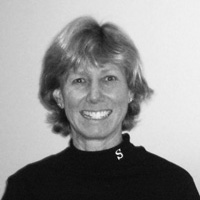 Brenda Cartwright is a Coda, seasoned interpreter, a master teacher, well known presenter, and author of several best selling sign language and interpreting textbooks from the RID Press. For 35 years Brenda was the Chair of the Sign Language Interpreter Program at Lansing Community College in Lansing, Michigan.
Brenda Cartwright is a Coda, seasoned interpreter, a master teacher, well known presenter, and author of several best selling sign language and interpreting textbooks from the RID Press. For 35 years Brenda was the Chair of the Sign Language Interpreter Program at Lansing Community College in Lansing, Michigan.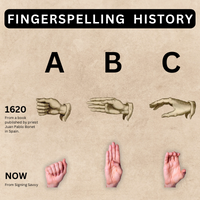 Fingerspelling History
Fingerspelling History What is the correct terminology when referring to deaf people?
What is the correct terminology when referring to deaf people?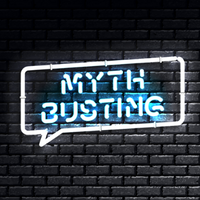 8 Myths About Deaf People
8 Myths About Deaf People



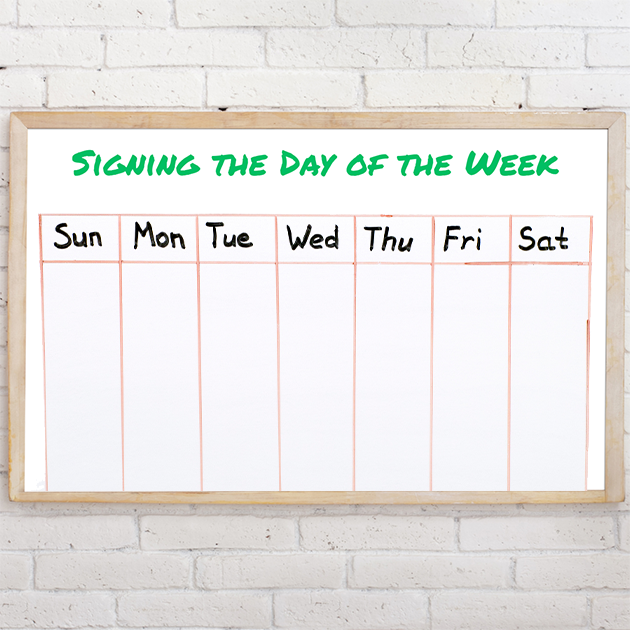

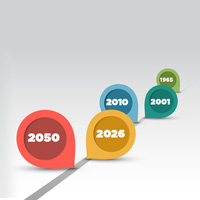


SpeedSpellerFriday, February 18, 2022
I loved this article- very easy to read and understand!
I'm wondering where you got the art at the beginning of the article?
Thanks!
-KG